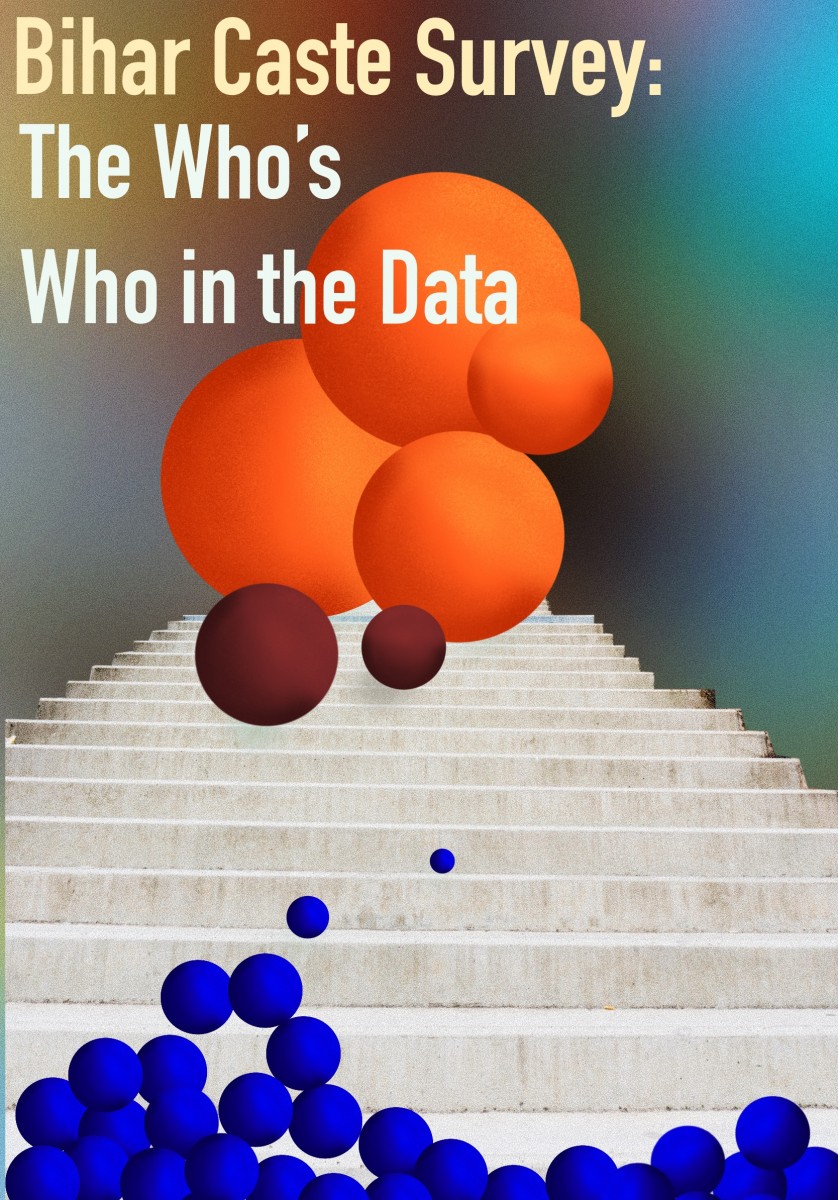Bihar Caste Survey: The Who’s Who in the Data | Bhathiyaras
Beyond politics, the Bihar caste survey is a revolutionary document.
A public document, the first ever after 1931, allowing for people to stand up and be counted.
We go down to the wire, on what each of the numbers unveiled mean.
Who are the people referred to by percentages in the survey?
Today we look at Bhathiyaras (27,263 people).
§
In the basic tenets and scriptures of Islam, there is no discrimination between the rich or poor.
However, discrimination does exist among certain followers of Islam who created three categories, Ashraf, Azlaf and Arzal. Bhathiyara is a caste group found mainly in Bihar. The group's name itself is often used as an abuse. It is not surprising that this abuse is hurled at anyone in public and few oppose it, not even the Bhathiyaras themselves.

Illustration: Pariplab Chakraborty
The fact is that in order to protest one needs numerical strength. In Bihar, according to the caste-based census report 2022 recently released by the state government, the current population of this caste group is merely 27,263. It will not be an exaggeration to claim that most of the people of this caste are landless.
Lack of numbers alone is not the reason for their social neglect. For example, the Chamar caste which works with leather has a population of 6,869,664 which is a significant number and has political implications. Yet people of this caste group are treated as untouchable and the name of this caste is also often used as an invective despite the Scheduled Caste and Scheduled Tribe (Prevention of Atrocities) Act, 1989, being in force in the country, which prohibits social humiliation of such castes. Also, those who take care of cattle and earn their living by milking them are berated as 'gowar', even though they have the highest population in Bihar – 16,500,119. In terms of share in the population, it is 14.266%.
Bhathiyara may be an insult for the rich, but for those who belong to this caste, it is an important term recognised by the Indian constitution. This caste group is categorised as an extremely backward class in Bihar and backward class in Uttar Pradesh. They mainly live in UP, Bihar and in parts of Rajasthan and claim that their ancestors were brought (to India) by the Mughals. They are categorised as a backward class in Rajasthan. Since Jharkhand was a part of Bihar before 2000, they are present there as well and have been placed in the same category as in Bihar. The people of this caste group also inhabit parts of Madhya Pradesh having probably migrated from Uttar Pradesh to the Satna region in search of a livelihood.
However, the people of this caste have now begun using the surname 'Farooqui', and sometimes, 'Sheikh Farooqui'. But they are still considered Bhathiyara in government documents as well as at the social level.
Surprisingly, this caste group is associated with Sher Shah Suri, who defeated Humayun and captured Delhi. A tomb built in the memory of this ruler is still present in Sasaram, Bihar. Sher Shah Suri ordered the construction of the Grand Trunk Road which directly connected Calcutta to Kabul in Afghanistan. In addition to the maintenance of the road, Bhathiyaras were handed over the responsibility of the inns built along it. Even today there is a place in Delhi called Sarai Kale Khan which must have been an inn to stop by before one entered the city.
Such historical references are present at several places. In Uttar Pradesh, the population of this caste group is more in Allahabad and Fatehpur. Meanwhile, one can come across a Bhatiyara even randomly in the districts of Central Bihar while in Rajasthan they mainly reside in Alwar, Bharatpur, Sikar, Jhunjhunu, Bikaner, Churu and Nagaur districts.
Historically, their occupation was to take care of inns but things changed with time. After the death of Sher Shah Suri, they continued working as innkeepers till the last ruler of this dynasty, his brother Salim Shah Suri. But when the Mughals re-conquered, they considered the community only worthy of pity. They were ousted from the inns and revenge was exacted from them for their service to Sher Shah Suri.
But history was never viewed from the perspective of the deprived and the conquered and so was true for the innkeepers. Those who once took pride in calling themselves Afghans accepted the supremacy of the Mughals. In some places they still consider themselves as Ashraf, like Sheikh.
However, time does not stay the same for anyone. Neither did the time of Sher Shah Suri last long, nor did that of the Mughals. These people have also changed with time. The innkeepers of yore are now forced to earn a living by laying bricks in brick kilns and selling old clothes and utensils. A piece of land is still something Bhathiyaras are deprived of.
Translated from Hindi by Naushin Rehman. Read the Hindi original here.
Read earlier parts of the series on the following communities by clicking on their names: Ghasi | Santrash | Madaria | Koeri/Kushwaha | Chaupal | Nai/Hajjaam | Pasi | Rangrez | Chamar | Gorkan | Jutt | Yadav | Kamar | Chik | Bari and Bauri | Dhuniya | Donwar | Sinduria Baniya.
The series is available in Hindi here and in Urdu, here.
This article went live on December first, two thousand twenty three, at fifty-six minutes past six in the evening.The Wire is now on WhatsApp. Follow our channel for sharp analysis and opinions on the latest developments.




